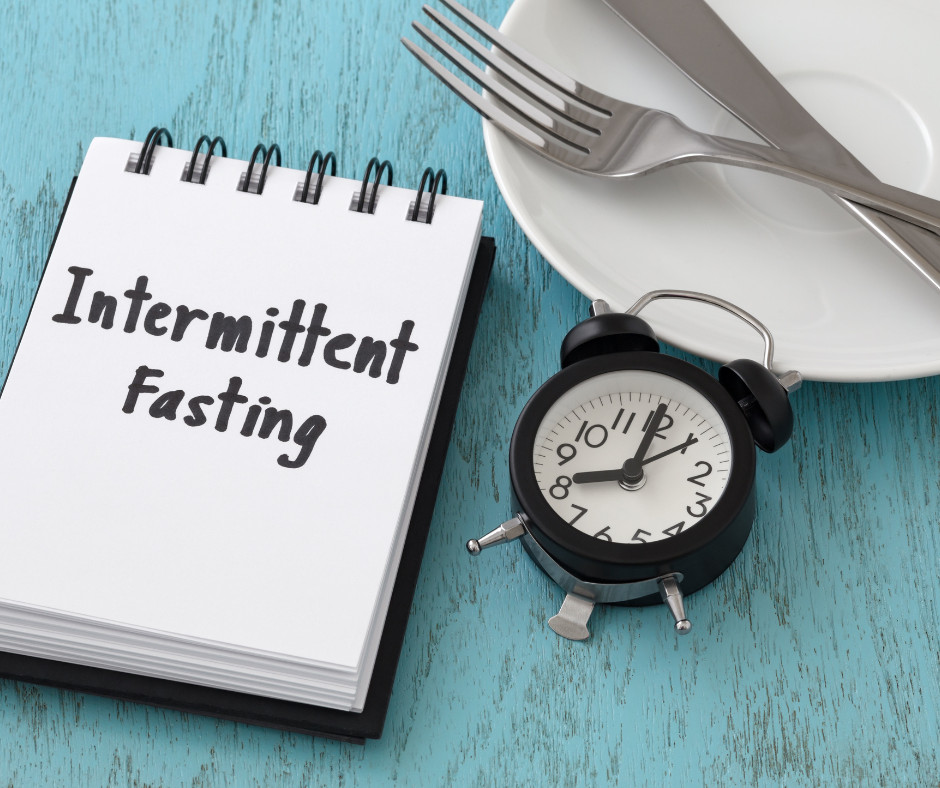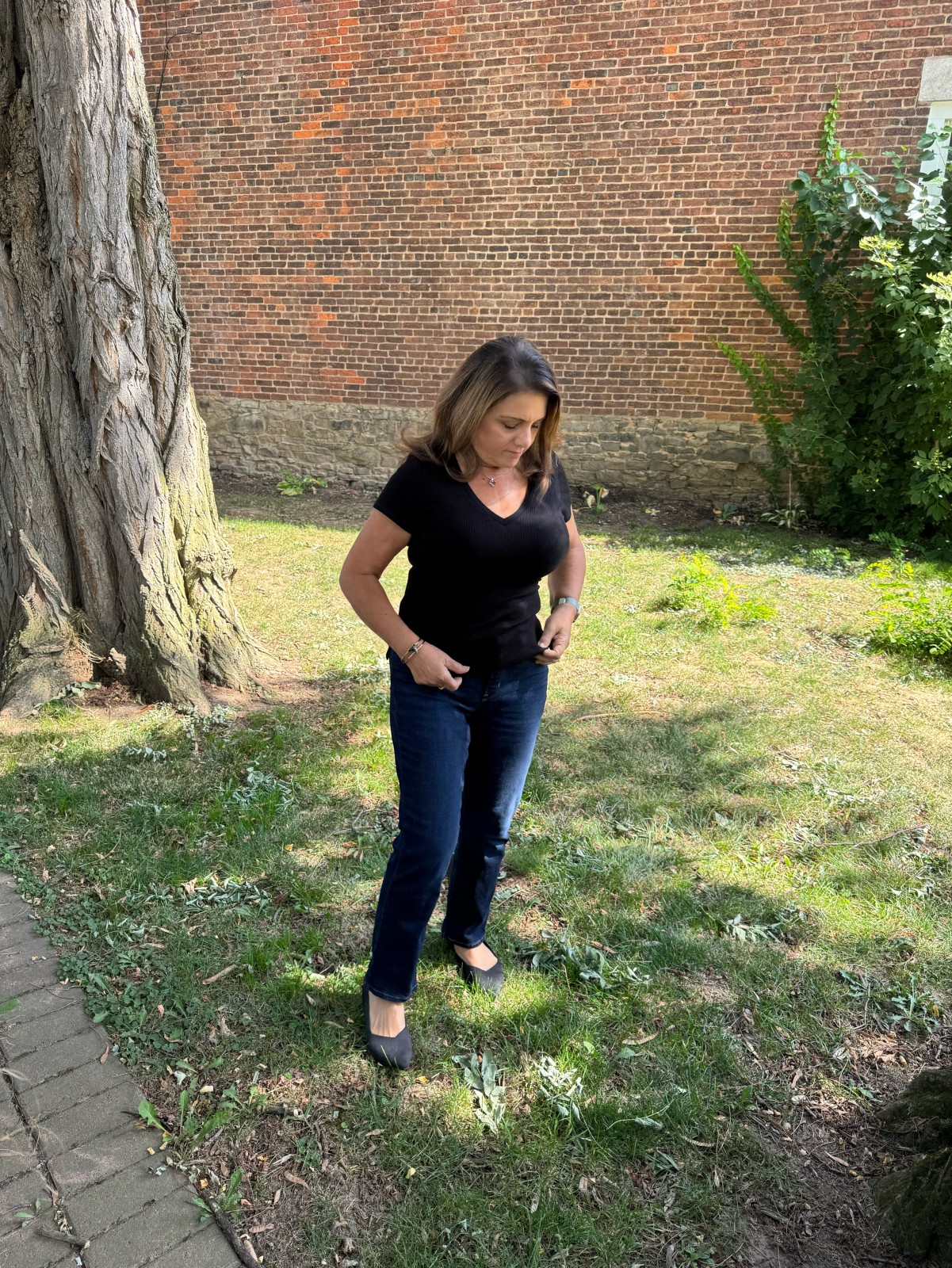
The Power of Small Steps: How Consistency Can Transform Your Health
As women over 40, we often find ourselves juggling multiple responsibilities and putting others' needs before our own. However, it's important to remember that taking care of our health should be a top priority. In this blog post, we will discuss the power of small steps taken consistently and how they can have a major long-term impact on your overall well-being.
One of the most significant benefits of small steps is that they are manageable and sustainable. Instead of trying to make drastic changes all at once, focusing on small, achievable goals allows you to build healthy habits over time. For example, instead of aiming to lose 20 pounds in a month, start by incorporating more fruits and vegetables into your meals or taking a daily walk around the block. These small changes may seem insignificant at first, but when done consistently, they can lead to significant improvements in your health.
Consistency is key when it comes to seeing long-term results. It's not about making huge transformations overnight but rather about making small choices every day that contribute to your overall well-being. Whether it's drinking more water, getting enough sleep, or practicing mindfulness through meditation or yoga, committing to these habits regularly can have a profound impact on your physical and mental health.
Another advantage of focusing on small steps is that they are less overwhelming than trying to tackle everything at once. Breaking down your goals into smaller milestones makes them more achievable and less daunting. By setting realistic expectations for yourself and celebrating each small victory along the way, you'll be more motivated to continue making positive changes in your life.
Taking care of your health is not just about physical well-being but also about nurturing your emotional and mental health. Small steps like setting aside time for self-care activities such as reading a book, taking a bubble bath, or going for a nature walk can help reduce stress levels and improve overall mood. Remember that self-care is not selfish; it's essential for maintaining balance and happiness in your life.
In conclusion, the power of small steps should not be underestimated when it comes to improving your health as a woman over 40. By focusing on manageable goals, staying consistent with healthy habits, and prioritizing self-care, you can create lasting changes that will benefit you in the long run. Remember that progress takes time, so be patient with yourself and celebrate every step forward on your journey to better health. Start today by taking one small step towards a healthier lifestyle—you'll be amazed at the transformative impact it can have on your overall well-being.
Join our 'Healthy Living Beyond 40' community today, and unlock the secrets to thriving in your middle years with expert advice, supportive peers, and actionable strategies to maintain a healthy weight.
Oh by the way, I have a program where we lose 7-15 pounds and reduce inflammation in just 11 days. Grab the info here!
Disclaimer: The information in this article is for educational purposes only and should not be considered medical advice. Please consult with a healthcare professional before making any changes to your diet or lifestyle.

Lowering Cholesterol Naturally with Vegetables
As we age, it becomes increasingly important to take care of our health, including managing our cholesterol levels. One way to do this is by incorporating more vegetables into our diets. Vegetables are not only low in calories and high in nutrients, but some of them have been found to have cholesterol-lowering properties. In this blog post, we will explore which vegetables can help lower cholesterol levels naturally, specifically targeting women over 40 who may be looking for ways to improve their heart health.
- Leafy greens such as spinach, kale, and Swiss chard are excellent choices for lowering cholesterol. These vegetables are packed with antioxidants and fiber, which can help reduce LDL (bad) cholesterol levels. Additionally, leafy greens are rich in vitamin K, which is known to play a role in blood clotting and heart health.
- Cruciferous vegetables like broccoli, cauliflower, and Brussels sprouts have also been shown to have cholesterol-lowering benefits. These veggies contain compounds called glucosinolates that can help regulate cholesterol levels and reduce inflammation in the body. They are also high in fiber, which helps keep you feeling full and satisfied.
- Avocados are another vegetable that can help lower cholesterol due to their high content of monounsaturated fats. These healthy fats have been found to increase HDL (good) cholesterol levels while reducing LDL (bad) cholesterol levels. Avocados also contain beta-sitosterol, a plant compound that has been shown to lower cholesterol absorption in the gut.
- Beans and legumes such as chickpeas, lentils, and black beans are great additions to a cholesterol-lowering diet. These vegetables are rich in soluble fiber, which binds to cholesterol in the digestive tract and helps eliminate it from the body before it can be absorbed into the bloodstream. Regular consumption of beans and legumes has been linked to improved lipid profiles and reduced risk of heart disease.
- Finally, sweet potatoes are a delicious vegetable that can help lower cholesterol levels thanks to their high content of soluble fiber and antioxidants like beta-carotene. The fiber in sweet potatoes helps slow down the absorption of cholesterol in the body, while the antioxidants protect against oxidative stress that can contribute to heart disease.
By incorporating more vegetables like leafy greens, cruciferous veggies, avocados, beans and legumes, and sweet potatoes into your diet, you can naturally lower your cholesterol levels and improve your overall heart health. Remember that lifestyle factors such as regular exercise and maintaining a healthy weight also play a crucial role in managing cholesterol levels. Making small changes like adding these vegetables to your meals can make a big difference in reducing your risk of heart disease as you age.
For those of us keen on balancing health with the hustle of daily life, finding efficient ways to source nutritious food is key. I've turned to a vegetable delivery service to ensure I get the freshest produce without sacrificing my schedule. And here's a treat: by using my referral link, you can enjoy a $10.00 discount on your first order. Discover the convenience and savings for yourself here: https://bit.ly/3ToVkEr
Join our 'Healthy Living Beyond 40' community today, and unlock the secrets to thriving in your middle years with expert advice, supportive peers, and actionable strategies for balancing hormones and maintaining a healthy weight.
Oh by the way, I have a program where we lose 7-15 pounds and reduce inflammation in just 11 days. Grab the info here!
Disclaimer: The information in this article is for educational purposes only and should not be considered medical advice. Please consult with a healthcare professional before making any changes to your diet or lifestyle.

The Truth About Lemon Water and Blood Pressure in Women Over 40
As women over 40, 50, 60, maintaining our health becomes increasingly important. One popular trend that has been circulating is the idea that drinking lemon water can help bring down blood pressure. But is there any truth to this claim? In this blog post, we will explore the relationship between lemon water and blood pressure in women over 40.
To begin with, let's look at the potential benefits of lemon water for blood pressure. Lemons are high in vitamin C, which is known to have antioxidant properties that can help reduce inflammation in the body. Additionally, some studies have shown that the potassium content in lemons may help lower blood pressure by reducing sodium levels in the bloodstream. However, it is important to note that these effects may vary from person to person and should not be seen as a sole solution for managing high blood pressure.
It's also worth mentioning that hydration plays a crucial role in maintaining healthy blood pressure levels. Drinking an adequate amount of water throughout the day can help prevent dehydration, which can lead to spikes in blood pressure. Adding lemon to your water can make it more palatable and encourage you to drink more, thus contributing to better hydration levels. This is my favorite water bottle, it has the ounces and a time schedule on it, it really helps keep me on track!
On the other hand, some experts argue that while lemon water may offer some health benefits, its impact on blood pressure specifically may be minimal. Factors such as genetics, diet, exercise habits, and stress levels play a much larger role in determining one's blood pressure readings. Therefore, relying solely on lemon water to bring down blood pressure may not be effective without addressing these other aspects of health.
In addition to its potential effects on blood pressure, lemon water has other benefits that women over 40 may find appealing. For example, lemons are a good source of vitamin C, which is essential for collagen production and skin health. The citrus fruit also contains compounds called flavonoids that have been linked to improved heart health and reduced risk of chronic diseases.
In conclusion, while lemon water may offer some health benefits for women over 40, it should not be viewed as a miracle cure for high blood pressure. Maintaining healthy lifestyle habits such as eating a balanced diet, staying active, managing stress levels, and staying hydrated are key factors in managing blood pressure effectively. If you are concerned about your blood pressure levels, it is always best to consult with a healthcare professional for personalized advice and recommendations tailored to your individual needs. Remember that taking care of your overall health is a holistic approach that involves multiple factors beyond just what you drink!
I monitor my Blood Pressure at home using this monitor: https://amzn.to/48KVbBA. It helps me stay proactive about my health and make informed decisions.
Join our 'Healthy Living Beyond 40' community today, and unlock the secrets to thriving in your middle years with expert advice, supportive peers, and actionable strategies for lowering Blood Pressure and maintaining a healthy weight.
Oh by the way, I have a program where we lose 7-15 pounds and reduce inflammation in just 11 days. Inflammation is one of the main reasons we get age related diseases! Grab the info here: https://bit.ly/42ecgBJ
Disclaimer: The information in this article is for educational purposes only and should not be considered medical advice. Please consult with a healthcare professional before making any changes to your diet or lifestyle.

Sleep and Weight Loss: Unlocking the Connection for a Healthier You
In the quest for weight loss, diet and exercise are usually the stars of the show. However, there's a critical, often overlooked component that plays a significant role in achieving and maintaining a healthy weight: sleep. The connection between sleep quality and weight loss is profound, with research indicating that poor sleep can sabotage weight loss efforts, regardless of diet and exercise habits. In this blog, we'll explore this connection and provide actionable tips to improve sleep quality, supporting your weight loss journey.
The Science Behind Sleep and Weight Loss
Sleep influences weight in several ways, primarily through its effect on hormones that regulate hunger and satiety. Leptin and ghrelin are two hormones intricately linked with appetite control; leptin signals satiety, while ghrelin promotes hunger. Lack of sleep disrupts the balance of these hormones, reducing leptin levels and increasing ghrelin, which can lead to increased hunger and appetite, making weight loss more challenging.
Furthermore, inadequate sleep can lead to insulin resistance, a condition where cells in the body don't respond well to insulin, leading to higher blood sugar levels and increased fat storage. This condition not only hampers weight loss but also increases the risk of developing type 2 diabetes.
Additionally, sleep deprivation affects decision-making processes and impulse control, making it harder to resist unhealthy food choices. It also saps energy levels, reducing the likelihood of engaging in physical activity. Together, these factors create a challenging environment for anyone trying to lose weight.
Tips for Better Sleep
Improving sleep quality can enhance your weight loss efforts and contribute to overall health. Here are some actionable tips to help you sleep better:
- Establish a Regular Sleep Schedule: Going to bed and waking up at the same time every day, even on weekends, helps regulate your body's internal clock and improve the quality of your sleep.
- Create a Restful Environment: Your bedroom should be a sanctuary for sleep. Keep it cool, dark, and quiet. Consider using blackout curtains, earplugs, or white noise machines to block out disruptions. I love the Hatch Restore Sunrise Alarm Clock.
- Limit Exposure to Screens Before Bed: The blue light emitted by phones, tablets, and computers can interfere with your ability to fall asleep. Try to avoid screens for at least an hour before bedtime.
- Mind Your Diet: Avoid large meals, caffeine, and alcohol close to bedtime. These can disrupt sleep. Instead, opt for a light snack if you're hungry.
- Establish a Relaxing Pre-Sleep Routine: Engage in relaxing activities before bed to help signal to your body that it's time to wind down. This could include reading, taking a warm bath, or practicing meditation or gentle yoga.
- Exercise Regularly—but Not Before Bed: Regular physical activity can help you fall asleep faster and enjoy deeper sleep. However, exercising right before bedtime can have the opposite effect for some people.
- Manage Stress: Stress is a common cause of sleep problems. Techniques such as deep breathing, meditation, and journaling can help manage stress levels and improve sleep.
- Consider Your Sleep Needs: Most adults need 7-9 hours of sleep per night. Ensure you're allocating enough time for sleep in your daily schedule. I love the WHOOP Band to monitor my sleep and help me make the adjustments necessary for better sleep.
The Bottom Line
The connection between sleep and weight loss is clear: good sleep is as crucial as diet and exercise for those looking to lose weight and improve their overall health. By implementing the tips outlined above, you can improve your sleep quality, supporting your weight loss efforts and enhancing your wellbeing.
Remember, weight loss is a journey that encompasses various aspects of health, including nutrition, physical activity, and sleep. Focusing on these elements in harmony can lead to successful and sustainable results. If you're struggling with sleep, consider seeking advice from a healthcare provider to identify and address any underlying issues. Embrace the power of sleep and let it be your ally in achieving a healthier, happier you.
Join our 'Healthy Living Beyond 40' community today, and unlock the secrets to thriving in your middle years with expert advice, supportive peers, and actionable strategies maintaining a healthy weight. Join the group here: https://bit.ly/48uQP0Z
Oh by the way, I have a program where we lose 7-15 pounds and reduce inflammation in just 11 days. Inflammation is one of the main reasons we get age related diseases! Grab the info here: https://bit.ly/42ecgBJ
Disclaimer: The information in this article is for educational purposes only and should not be considered medical advice. Please consult with a healthcare professional before making any changes to your diet or lifestyle.

How Long Does It Take for Intermittent Fasting to Reduce Pain and Inflammation?
Intermittent fasting (IF) has gained significant traction as a lifestyle choice for those looking to improve their health and wellbeing. Among its purported benefits, the reduction of pain and inflammation stands out, especially for individuals suffering from chronic conditions. However, a common question that surfaces is: How long does it take for intermittent fasting to start showing results in terms of pain and inflammation reduction?
Understanding the Process
Intermittent fasting works by cycling between periods of eating and fasting. This practice is believed to trigger various cellular and molecular mechanisms, including autophagy (the body's way of cleaning out damaged cells), hormone modulation, and reduced oxidative stress, which collectively contribute to its anti-inflammatory effects.
Immediate Effects vs. Long-Term Benefits
Short-term Impact: In the initial days of adopting intermittent fasting, the body begins to adjust to the new eating pattern, which can take from a few days to a few weeks. During this period, some individuals may experience a temporary increase in discomfort, as the body transitions into ketosis and starts utilizing fat for energy. This phase is often short-lived and followed by a notable improvement in energy levels and mental clarity.
Long-term Benefits: The more significant benefits of intermittent fasting on inflammation and pain management are typically observed over a more extended period. Research suggests that it can take anywhere from 8 to 12 weeks for noticeable changes to occur. This timeframe allows the body to adapt fully to the fasting regimen, leading to more pronounced effects on inflammation and pain reduction.
Factors Influencing the Timeline
The time it takes for intermittent fasting to reduce pain and inflammation can vary significantly among individuals, influenced by several factors:
- Type of Fasting Regimen: There are various forms of intermittent fasting, such as the 16/8 method (fasting for 16 hours and eating within an 8-hour window) or the 5:2 method (eating normally for five days and significantly reducing calorie intake for two days). The choice of regimen can affect how quickly one sees results.
- Baseline Inflammation Levels: Individuals with higher levels of inflammation may notice more rapid changes, as the body responds to the positive stress of fasting.
- Lifestyle and Dietary Choices: The benefits of intermittent fasting can be enhanced or diminished by other lifestyle factors, including diet, physical activity, and stress management.
- Individual Metabolic Rate: Metabolism plays a crucial role in how quickly the body responds to dietary changes, including intermittent fasting.
Realistic Expectations and Health Considerations
While intermittent fasting offers promising results for many, it's essential to maintain realistic expectations and prioritize overall health. Some may experience improvements in pain and inflammation within weeks, while others may find it takes longer to observe tangible benefits.
It's also crucial to consider that intermittent fasting isn't suitable for everyone. Individuals with certain health conditions, pregnant or breastfeeding women, and those with a history of eating disorders should consult with healthcare professionals before embarking on a fasting regimen.
Conclusion
Intermittent fasting can be a powerful tool for reducing inflammation and managing pain, but it requires patience and persistence. The journey is highly individual, with results varying based on numerous factors. For those considering intermittent fasting for its anti-inflammatory benefits, adopting a holistic approach that includes healthy eating, regular physical activity, and stress management can amplify the effects and lead to a more profound sense of wellbeing. Remember, consulting with a healthcare provider before starting any new health regimen is always recommended to ensure it aligns with your personal health needs and goals.
Join our 'Healthy Living Beyond 40' community today, and unlock the secrets to thriving in your middle years with expert advice, supportive peers, and actionable strategies for reducing pain and inflammation and maintaining a healthy weight. Join the group here: https://bit.ly/48uQP0Z
Oh by the way, I have a program where we lose 7-15 pounds and reduce inflammation in just 11 days. Inflammation is one of the main reasons we get age related diseases! Grab the info here: https://bit.ly/42ecgBJ
Disclaimer: The information in this article is for educational purposes only and should not be considered medical advice. Please consult with a healthcare professional before making any changes to your diet or lifestyle.








